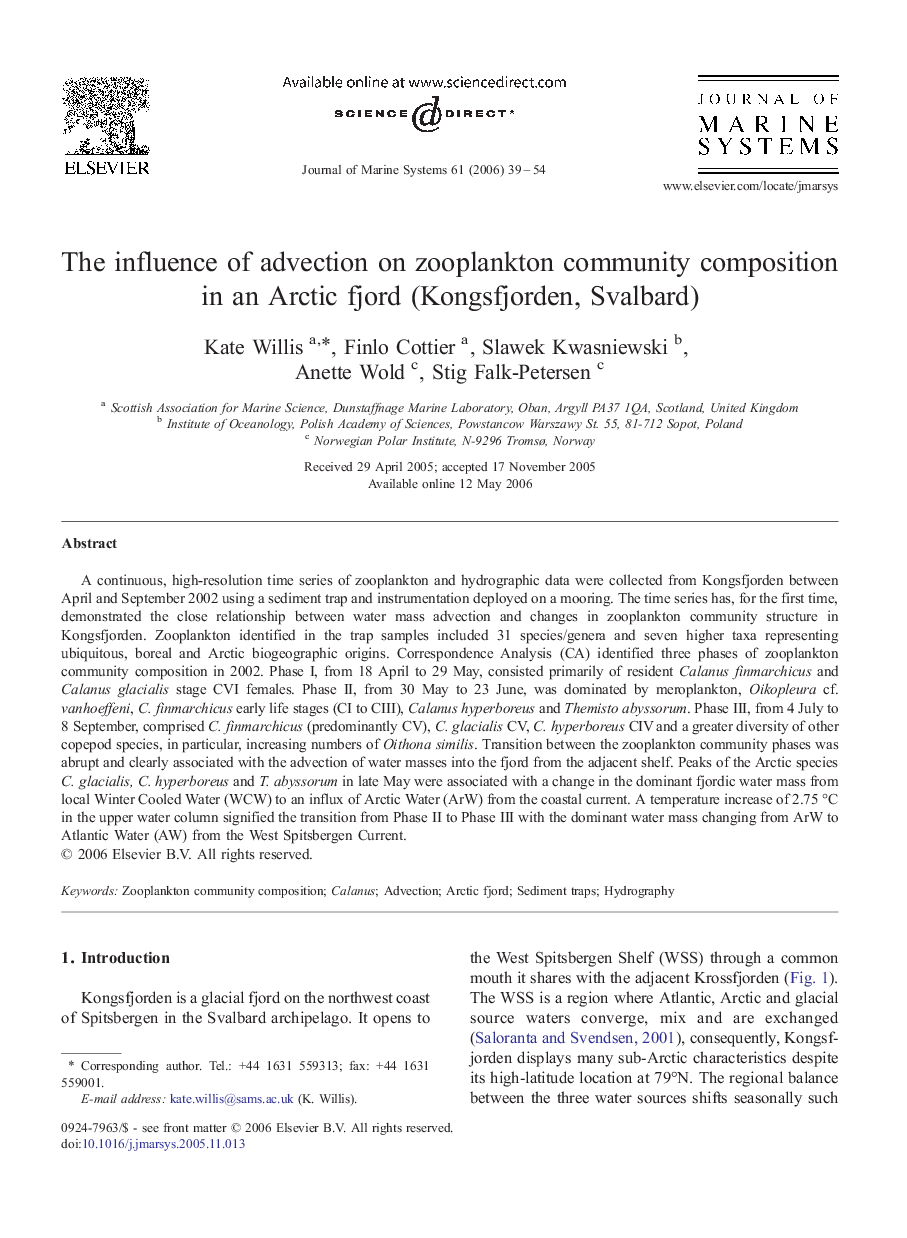| کد مقاله | کد نشریه | سال انتشار | مقاله انگلیسی | نسخه تمام متن |
|---|---|---|---|---|
| 4549362 | 1627365 | 2006 | 16 صفحه PDF | دانلود رایگان |

A continuous, high-resolution time series of zooplankton and hydrographic data were collected from Kongsfjorden between April and September 2002 using a sediment trap and instrumentation deployed on a mooring. The time series has, for the first time, demonstrated the close relationship between water mass advection and changes in zooplankton community structure in Kongsfjorden. Zooplankton identified in the trap samples included 31 species/genera and seven higher taxa representing ubiquitous, boreal and Arctic biogeographic origins. Correspondence Analysis (CA) identified three phases of zooplankton community composition in 2002. Phase I, from 18 April to 29 May, consisted primarily of resident Calanus finmarchicus and Calanus glacialis stage CVI females. Phase II, from 30 May to 23 June, was dominated by meroplankton, Oikopleura cf. vanhoeffeni, C. finmarchicus early life stages (CI to CIII), Calanus hyperboreus and Themisto abyssorum. Phase III, from 4 July to 8 September, comprised C. finmarchicus (predominantly CV), C. glacialis CV, C. hyperboreus CIV and a greater diversity of other copepod species, in particular, increasing numbers of Oithona similis. Transition between the zooplankton community phases was abrupt and clearly associated with the advection of water masses into the fjord from the adjacent shelf. Peaks of the Arctic species C. glacialis, C. hyperboreus and T. abyssorum in late May were associated with a change in the dominant fjordic water mass from local Winter Cooled Water (WCW) to an influx of Arctic Water (ArW) from the coastal current. A temperature increase of 2.75 °C in the upper water column signified the transition from Phase II to Phase III with the dominant water mass changing from ArW to Atlantic Water (AW) from the West Spitsbergen Current.
Journal: Journal of Marine Systems - Volume 61, Issues 1–2, June 2006, Pages 39–54